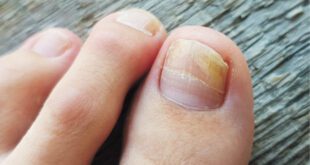By Eric Milbrandt, MD, MPH
 If you are reading this article, chances are your life has been affected by suicide. Perhaps it was a loved one or close friend. Perhaps both. For me, it happened first with my best friend in high school. Then came a college roommate, a coworker, and my stepmother. In each heartbreaking loss, I never saw it coming. As is often the case, death by suicide comes as a complete surprise to those of us who are left behind, leaving us to wonder what we missed, why it happened, and what can we do to prevent such tragedies from happening in the future.
If you are reading this article, chances are your life has been affected by suicide. Perhaps it was a loved one or close friend. Perhaps both. For me, it happened first with my best friend in high school. Then came a college roommate, a coworker, and my stepmother. In each heartbreaking loss, I never saw it coming. As is often the case, death by suicide comes as a complete surprise to those of us who are left behind, leaving us to wonder what we missed, why it happened, and what can we do to prevent such tragedies from happening in the future.
Suicide is defined as the act of deliberately killing oneself or, more specifically, an act deliberately initiated and performed by the person concerned in the full knowledge, or expectation, of its fatal outcome. Death by suicide is the 10th leading cause of death in the United States. In 2017, more than 47,000 Americans died by suicide, while 1.4 million attempted suicide. On average, there are 129 suicides each day.
The desire for death that underlies suicide is thought to occur through intrusive thoughts (ideations) of thwarted belongingness and perceived burdensomeness. The former is described as feeling alienated from others emotionally, while the latter is described as feeling that one is incompetent and therefore a burden on others.
There is no single cause for suicide. Most often, it occurs when stressors and health issues converge to create an experience of hopelessness and despair. Health-related risk factors include depression, anxiety, substance use, serious physical health conditions, chronic pain, and traumatic brain injury. Environmental factors include prolonged stress, harassment, bullying, serving in combat, relationship problems, job loss, divorce, financial crisis, exposure to another person’s suicide, and access to lethal means, such as firearms and drugs. Historical factors include previous suicide attempts, family history of suicide, and personal history of childhood abuse, neglect, or trauma.
Being aware of warning signs of suicide can help to identify those at risk in order to assist them in finding help. Most people who take their lives exhibit one or more warning signs through what they say or what they do. For instance, if a person talks about killing himself, feeling hopeless, having no reason to live, being a burden to others, feeling trapped, or in unbearable pain. Sudden changes in behavior can also be a signal, especially if related to a painful event, loss, or life change. Worrisome behaviors include increased use of alcohol or drugs, withdrawing from activities, isolating from family and friends, sleeping too much or too little, visiting or calling people to say goodbye, giving away prized possessions, or searching online for a way to end one’s life.
Ninety percent of people who die by suicide have a mental health disorder at the time of their deaths. There are biological and psychological treatments that can alleviate these disorders and help prevent suicide. Medications include antidepressants, atypical antipsychotics, and lithium. Unfortunately, many of these take weeks to achieve maximum benefit. In the short term, they may increase suicide risk in some patients, especially children, adolescents, and young adults. Beyond medicines, there are two types of psychotherapy that have proven beneficial. These are cognitive behavioral therapy (CBT) and dialectical behavioral therapy (DBT). These are provided in formalized, interactive sessions taking place one or two times per week with a therapist, typically continuing for 12-16 weeks.
Ketamine – new hope for those in crisis
Ketamine is a medicine developed more than 50 years ago for anesthesia during surgery and other painful procedures. High-dose intravenous (IV) ketamine has been used safely for that purpose in children, adults, and animals for decades. More recently, low-dose IV ketamine has been shown to be a fast acting and highly effective treatment for those with depression and for those in acute crises who are considering or have attempted suicide.
In a study conducted by Dr. Lori Calabrese and first reported at the May 2019 American Psychiatric Association annual meeting, IV ketamine infusions eliminated suicidal ideation in more than two-thirds of 144 markedly suicidal patients. Even if patients had been suicidal for a long time, been hospitalized, or made suicide attempts, 68% had full remission of suicidality.
Importantly, ketamine therapy, like any medication therapy, should be part of an integrated approach to mental health care that includes ongoing care by a therapist, psychiatrist, and/or primary care physician.
Conclusion
Suicide is preventable yet remains a leading cause of death in part due to a lack of available medical interventions that can work during a suicidal crisis. Being aware of warning signs can provide opportunities to help those at risk. One immediate source of help is the National Suicide Prevention Lifeline: 1-800-273-TALK (8255). Medications and psychotherapy can be of great benefit but often take days or weeks to work, a waiting period that is often not feasible. IV ketamine therapy is a fast acting and highly effective treatment for depression and suicidal ideation. You can find out more about IV ketamine therapy in the January issue of Health & Wellness Magazine (https://tinyurl.com/y7sursfq), online at https://www.InfusionClinicOcala.com, or by calling The Infusion Clinic of Ocala at (352) 325-5755.
The Infusion Clinic of Ocala
40 SW 1st Avenue
Ocala, FL 34471
In Faithfully Guided Health Center
Tel: (352) 325-5755
Fax: (352) 354-4630
If you or someone you know is showing warning signs, there is immediate help available. The National Suicide Prevention Lifeline (1-800-273-TALK (8255)) is available 24/7, providing free and confidential emotional support for people in suicidal crisis or emotional distress. There is even a Crisis Text Line
available by texting TALK to 741741.
 Central Florida Health and Wellness Magazine Health and Wellness Articles of the Villages
Central Florida Health and Wellness Magazine Health and Wellness Articles of the Villages



